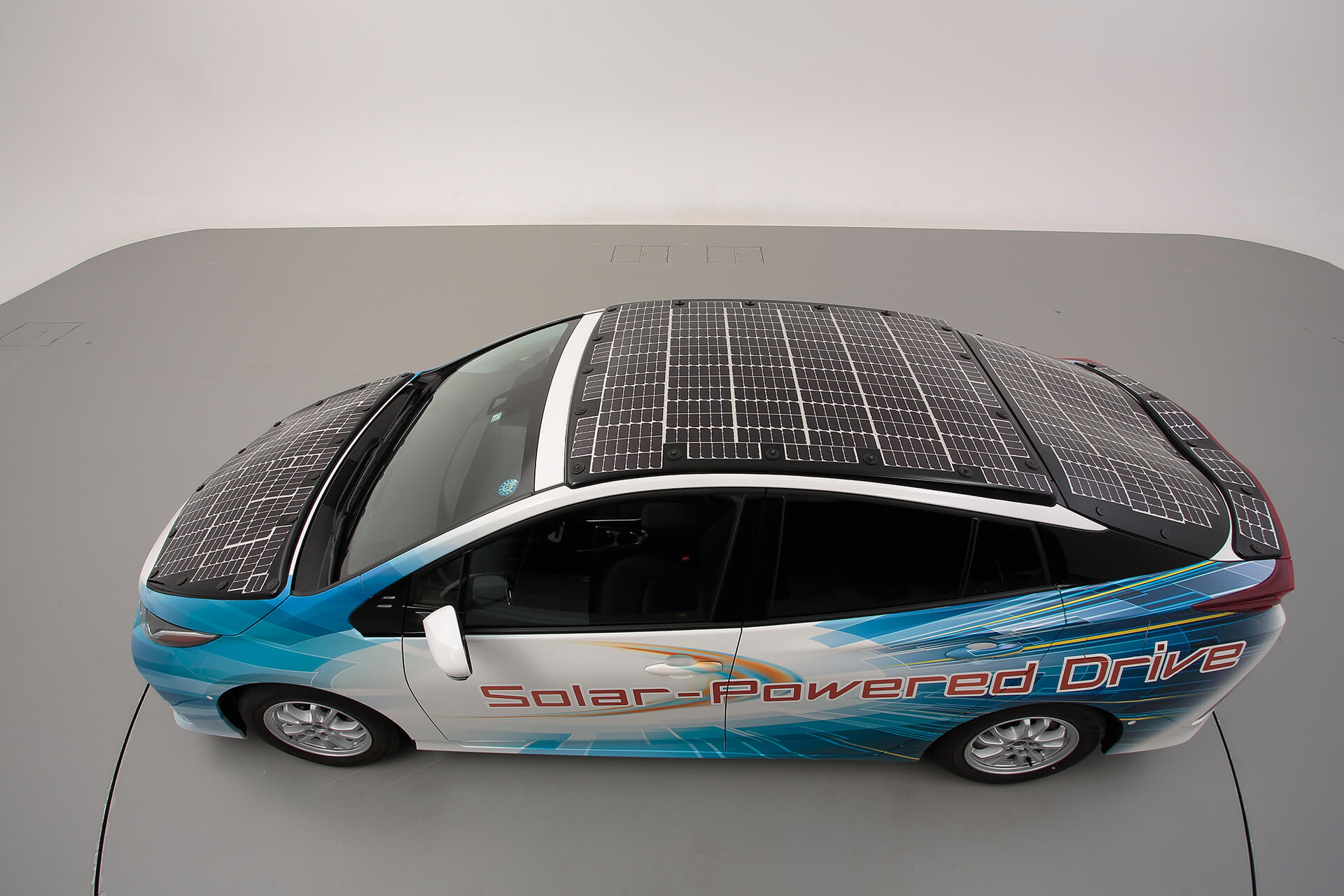The big picture: Toyota doesn't have an all-electric vehicle yet but is currently experimenting with solar roofs on its Prius hybrid, with public tests starting later this month. The company was previously focused on hybrids as a way to make use of its limited battery production capacity and put more cars on the road, but if recent news are any indication, that strategy could be about to change.
When the Japanese automaker isn't busy building self-driving stores on wheels and flying cars, it keeps its hands busy trying new ideas on how to make electric vehicles last longer on the road before you need a charge. The company recently started publicly testing a new version of its solar roof for the Prius PHV, which can add up to 44.5 km (27.6 miles) of range a day, or even up to 56.3km (35 miles) when using the auxiliary power that also drives AC, navigation, and other systems.
The pilot project slated for later this month will test how it behaves in a range of weather and driving conditions, and is made in collaboration with Sharp and Japanese national research organization NEDO. The former is the manufacturer of the solar cells that are just 0.03mm thick and can supply up to 860 watts of power, enough to charge the car while driving.

The previous 2016 model had a less efficient battery cell conversion versus the current one's 34%, and thus was only able to charge when parked, while the relatively modest power output could only add a range of up to 6 km (3.7 miles) a day, or seven times less than the current prototype.
Toyota hasn't said anything about when we can expect to see the redesigned solar roof on a commercial product, but judging by the company's own plans to develop a pure electric car by 2022, this might align perfectly within that timeline.
It's worth noting that while these solar car efforts are laudable, Toyota faces competition from Hyundai and even startups such as Lightyear who are working on a more visually-appealing car with a more capable solar roof. Those efforts are not set to hit the roads until 2021 at the earliest, which is ample time for the Japanese to figure out a good design nonetheless.
